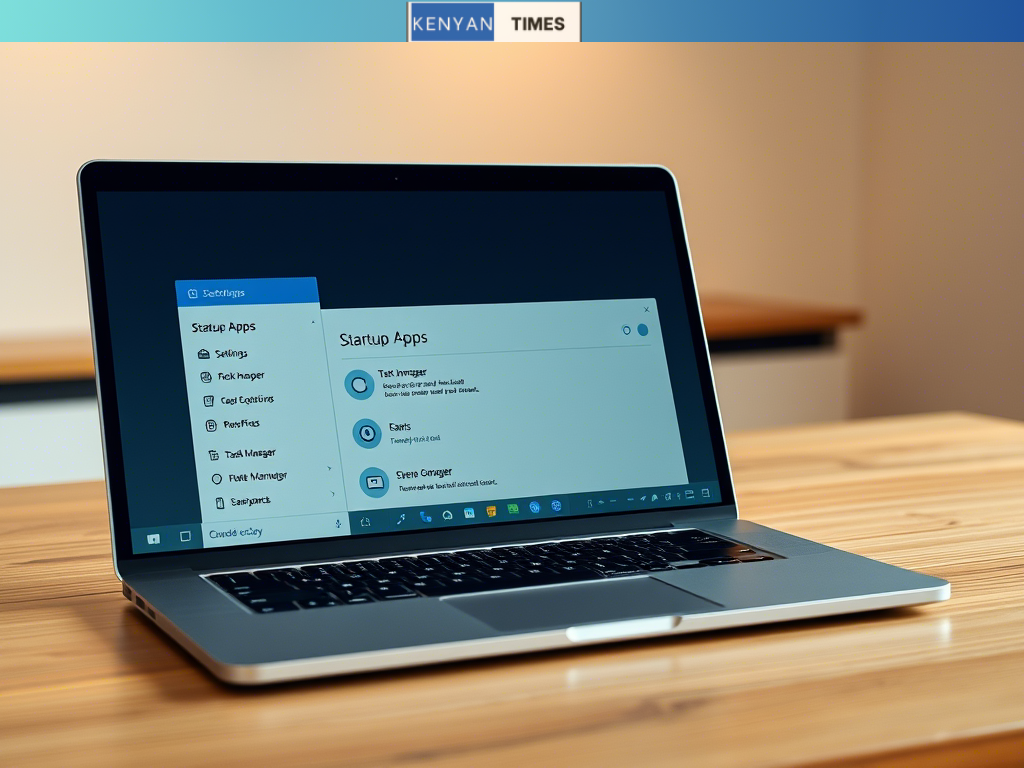Startup apps can be both a convenience and a curse. While some help your system run smoothly, others silently slow down your boot time, hog resources, and even reduce your laptop’s performance over time.
Whether you’re on Windows or macOS, learning how to manage startup apps effectively is a key step in maintaining a faster and healthier computer.
Table of Contents
- 1 Why You Should Care About Startup Apps
- 2 1. Audit Your Current Startup Programs
- 3 2. Disable Non-Essential Apps
- 4 3. Use Built-in Tools Like MSConfig or System Preferences
- 5 4. Utilize Third-Party Startup Managers
- 6 5. Prioritize What Matters Most
- 7 6. Monitor Performance Post-Changes
- 8 7. Keep Your Apps and OS Updated
- 9 Common Mistakes to Avoid
- 10 Tools and Resources to Learn More
- 11 Final Thoughts
- 12 FAQs
Why You Should Care About Startup Apps
Every time your device powers on, a list of programs launches automatically. While some—like antivirus software or drivers—are essential, many others are unnecessary and drain system resources. These can include:
- Messaging apps like Skype or Teams
- Cloud services like Dropbox or OneDrive
- Game launchers or third-party utilities
Over time, these apps build up and begin to impact boot time, reduce battery life, and clutter your workflow.
1. Audit Your Current Startup Programs
Before making changes, you need to know what you’re working with. Both Windows and macOS make it easy to view your current list of startup items.
On Windows 10/11:
- Press
Ctrl + Shift + Escto open Task Manager. - Navigate to the Startup tab.
- You’ll see a list of all apps set to launch at startup, along with their “Startup impact” ratings (Low, Medium, or High).
On macOS:
- Go to
System Settings > General > Login Items - Review apps listed under “Open at Login.”
This gives you a full picture of what’s running when you boot up your device.
2. Disable Non-Essential Apps
Now that you have your list, disable anything that isn’t mission-critical.
On Windows:
- In the Startup tab of Task Manager, right-click an app and choose Disable.
On macOS:
- Click the minus (–) icon below the login item list to remove it from starting automatically.
Tip: Avoid disabling anything you’re unfamiliar with—Google the app name first. Some processes may be required by your system or essential software.
3. Use Built-in Tools Like MSConfig or System Preferences
For more advanced control, go a step further with system tools:
Windows:
- Press
Windows + R, typemsconfig, and hit Enter. - Go to the Startup tab (this redirects to Task Manager in Windows 10/11).
macOS:
- Use the Users & Groups section in System Preferences to adjust login items for different user accounts.
4. Utilize Third-Party Startup Managers
If you’re looking for more automation and insights, third-party tools can help:
- CCleaner – Offers a simple interface for managing startup programs.
- Autoruns – A powerful, free Microsoft tool that shows you everything starting up with Windows.
- CleanMyMac X – For macOS users, this app helps you manage login items, launch agents, and system daemons.
These tools help you dig deeper into background processes and automate startup optimization.
5. Prioritize What Matters Most
It’s okay to let some apps launch at startup—just make sure they’re helpful. Ask yourself:
- Do I use this app immediately after booting?
- Does it significantly slow down my device?
- Is it safer to keep this app running in the background?
Use this checklist to prioritize apps based on function and necessity.
6. Monitor Performance Post-Changes
After disabling startup items, reboot your system and check performance:
- Is boot time faster?
- Are you seeing fewer system lags?
- Any missing functionalities?
If issues appear, simply re-enable the app from Task Manager or System Preferences.
7. Keep Your Apps and OS Updated
Outdated apps often cause slowdowns or conflicts. Keeping your software up to date ensures compatibility and performance.
- On Windows, go to
Settings > Update & Security. - On macOS, visit
System Settings > General > Software Update.
Common Mistakes to Avoid
- Disabling essential drivers or security software.
- Over-relying on third-party apps without understanding them.
- Ignoring warning signs like system crashes or missing features.
Tools and Resources to Learn More
Final Thoughts
Learning how to manage startup apps effectively can dramatically improve your system’s speed, reliability, and battery life. With just a few changes, you’ll free up resources and streamline your daily workflow.
Whether you’re a student, professional, or casual user, regular maintenance of your startup apps is one of the easiest wins for long-term device health.
FAQs
Q1: What startup apps should I disable?
Disable any apps you don’t use regularly or immediately after logging in—such as Skype, Spotify, or gaming launchers.
Q2: Will disabling startup apps improve performance?
Yes, especially boot time and general responsiveness.
Q3: Can startup apps cause slow shutdowns too?
Yes. Apps that run in the background can slow both startup and shutdown times.
Q4: How often should I review startup apps?
Every few months, especially after installing new software.
Q5: Is it safe to use third-party startup managers?
Yes—tools like CCleaner and Autoruns are safe if downloaded from trusted sources.
